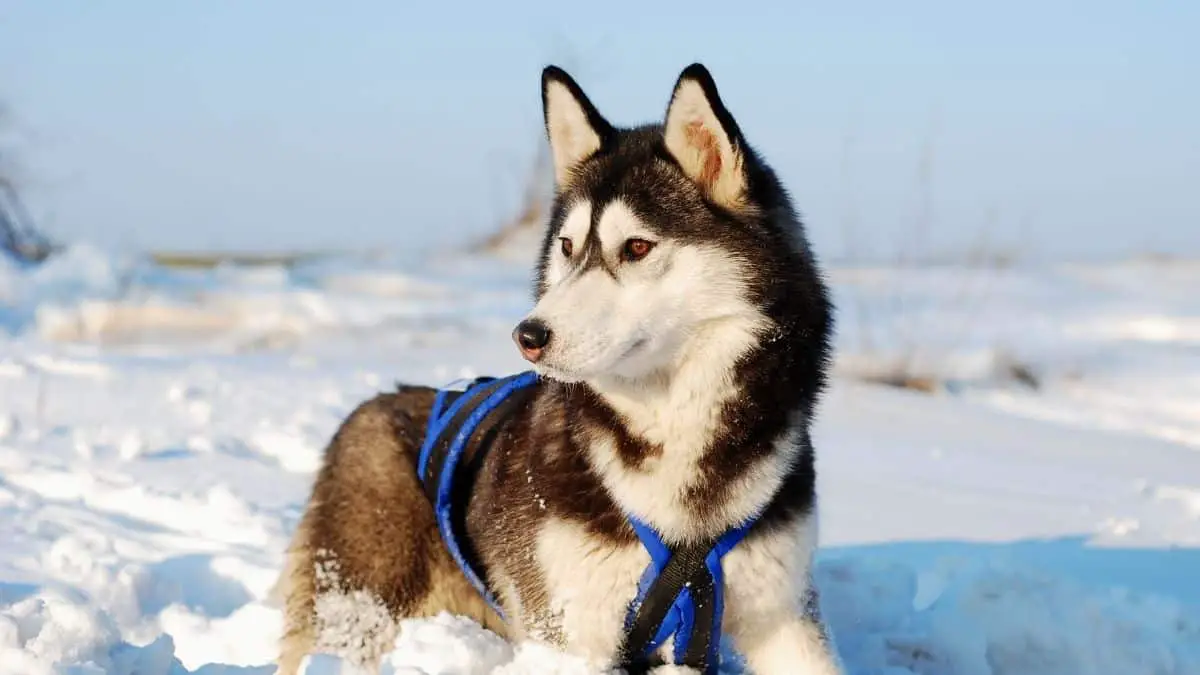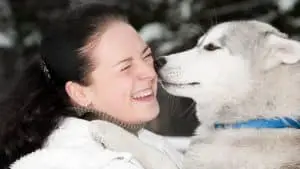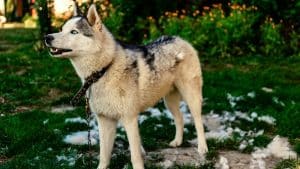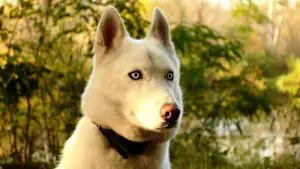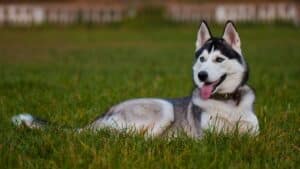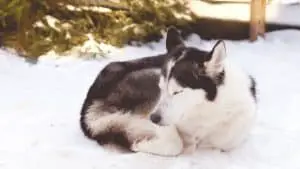Are Siberian Huskies Endangered? 4 Things You Need To Know
Contemplating getting yourself a Siberian husky but worried about how easy that is going to be? Doubtful of its population status? It can certainly be challenging to adopt or even buy breeds listed in the endangered or at-risk category. Such varieties are covered under careful frameworks and regulations, which might make it challenging for you to take them in as pets.
Luckily for us husky lovers, this glorious breed is not part of the endangered types list as yet. It is found quite commonly in domestic settings. Reportedly, Siberian huskies’ popularity even rose exponentially after the airing of the acclaimed TV show, Game of Thrones.
Thus, the husky population is not dwindling. It does, however, face dangers on account of both external and internal factors. To better understand your pet of choice, it pays to know about its natural setting and where its principal potential threats rise from.
Table of Contents
Where Do They Come From?
Let us take a look at what the Siberian husky journey has been like from its origins to the present day.
As the name suggests, the Siberian husky traces its roots to Siberia. As late as 1909, it was first introduced to another region, namely, Alaska, to be used as a sled dog. When it comes to husky breeding, the Chukchi community of northeast Asia and easter Siberia is seen as the initial breeder. In this, they aimed to breed dogs that had amazing endurance and could withstand extreme cold.
As far as its features are concerned, a husky has next to no dog odor and likes to keep very clean. This breed is also quite social and frequently desires human contact and interaction. This is also the reason Siberian huskies don’t work well as watchdogs.
A famously intelligent dog breed, Siberian huskies are surprisingly active and like to work. Considering how high energy this breed is, you need to give your husky a sizeable area to run and a strict exercise regimen.
Thus, huskies are known to make for terrific partners for morning runs during winter. Luckily for us, huskies do not bark a lot. They do howl, though, especially when under-exercised or bored. An overall healthy and robust breed, they have an average lifespan of 11-14 years.
Recently, it has been established that three breeds of Alaskan husky, Alaskan malamute, and the Siberian husky share quite a similar genetic heritage, all bearing close similarity to the Chukotka sled dogs from Siberia.
These three in their genetic relationship are distinct from the two similar-looking Inuit dogs, namely, Greenland Dog and Canadian Eskimo Dog. In North America, Malamute and Husky both remained close to their Siberian lineage.
Further, several arctic breeds, particularly the Siberian, are genetically very close to the Taimyr wolf of northern Asia, which is now extinct.
Trait-wise, Siberian huskies are pack dogs known to appreciate family life and be compatible with other dogs. This friendliness and geniality of these dogs compromise their ability to be strict watchdogs. An overall dynamic breed, Huskies, need an exercise ground or room to spend their energy.
Are Siberian Huskies Endangered?
Siberian huskies are not designated as endangered breeds in North America or elsewhere they are found. They are quite common as domestic pets. The popularity of the huskies has only increased over the years, especially after the airing of the much-loved TV series, Game of Thrones.
Another member of the husky family has, however, recently been declared extinct. The Sakhalin Husky also called the Karafuto Ken, went extinct in 2012 after the only two surviving members of the breed died in Japan. Since they were both males, the breed could not be carried on further.
Even though the Siberian husky doesn’t fall in the endangered category, this breed does face different threats and challenges.
On account of their soaring popularity and considerably high mental and physical needs, new owners are often found either abandoning them or giving them up to shelters. This is primarily because of insufficient research on the owners’ part before getting them home or their inability to care for them properly.
Many people choose to go for huskies because of their looks and depictions in mythology and pop culture. Many purchase them from puppy mills or backyard breeders who don’t follow proper breeding practices and most often do not even have breeder-return contracts intended to keep the huskies out of shelters.
What Is Their Natural Habitat?
The ideal natural habitat of a husky can be deduced from its place of origin. It is made to be suitable for the north’s cold, nearly frigid climates, such as the Alaskan wilds or the Siberian tundra.
The Chukchi community bred them specifically to withstand the harsh climate. Therefore, this breed boasts a thick double coat of fur to survive in the rough weather and the extreme north’s long nights. Where some other working dog breeds risk freezing to death in that kind of climate, the Siberian husky thrives.
If it can’t find a place indoors to rest, it digs a burrow under the snow for itself. Their eyes are not as protruding as those of most other breeds and are almond-shaped to reduce their exposure to the freezing winds.
Huskies don’t feature a lot of skin pigmentation. Therefore, it is not recommended to shave their coat. Doing so would leave the husky exposed to sun damage which can even lead to skin cancer.
Rather than shearing the coat, you should try to ensure that your husky is not exposed to uncomfortably warm climates. The dog requires cool shade and water at all times, apart from an indoor sanctuary during summer or in case of bright sunlight outdoors.
What Are The Main Dangers?
Apart from the dangers of an external nature we briefly talked about, there are internal conditions that can endanger the life of your husky as well.
While the average life span of Siberian huskies is between 11 to 14 years, they are vulnerable to health issues that can affect their life span. Most of these health afflictions are genetic, such as eye defects and seizures. Siberian huskies’ common eye conditions can suffer from including corneal dystrophy, progressive retinal atrophy, canine glaucoma, and juvenile cataracts.
An otherwise frequent concern for dog breeds, hip dysplasia is not a problem in the case of huskies, though it can occur in the larger-sized ones. The breed of Siberian husky has been ranked 155 out of 160 species at risk of hip dysplasia.
The huskies used for sled racing are also at risk of showing other ailments like bronchitis, bronchopulmonary ailments, or gastric diseases like ulcerations or erosions.
One of the most common chronic issues found in pets is a type of dental disease. Nearly 80% of dogs are affected by it by the time they are two years old. In terms of this, the husky is not an exception. Tooth or gum infections need to be taken care of in the initial stages, or they risk spreading to other parts and causing significant damage.
Apart from this, there are some other viral and bacterial infections these dogs are vulnerable to, such as rabies, distemper, and parvo. Most of these can be prevented through vaccination according to the pup’s age and weight.
Another serious health concern in the case of huskies is obesity. It leads to digestive or metabolic disorders, worsens joint problems and back pain, and can even lead to heart disease. Thus, their diet and daily portions need to be carefully regulated to maintain the ideal weight and optimal health.
Last but not least, the presence of parasites, worms, and bugs within or on the body can also cause immense discomfort to your husky. Their ears and skin are susceptible to infestation of ticks, ear mites, and fleas. Worms can make them into the dog’s body through dirty water or contaminated soil. Some of these parasites can even be transmitted to you and cause significant health issues.
It is thus essential to take care of your husky’s health through vaccinations and regular check-ups.
To Sum Up
In a nutshell, the Siberian husky as a breed is not in danger of extinction. It is a popular pet common across North American households.
The individual members of the breed do, however, face other kinds of challenges to their survival, from being abandoned by new owners to inhuman breeding conditions in puppy mills to being raised in unsuitable climates apart from being at risk of several health conditions.
Being aware of these as a husky owner is sure to help you minimize the dangers to their optimal health and ensure the best care for them.

